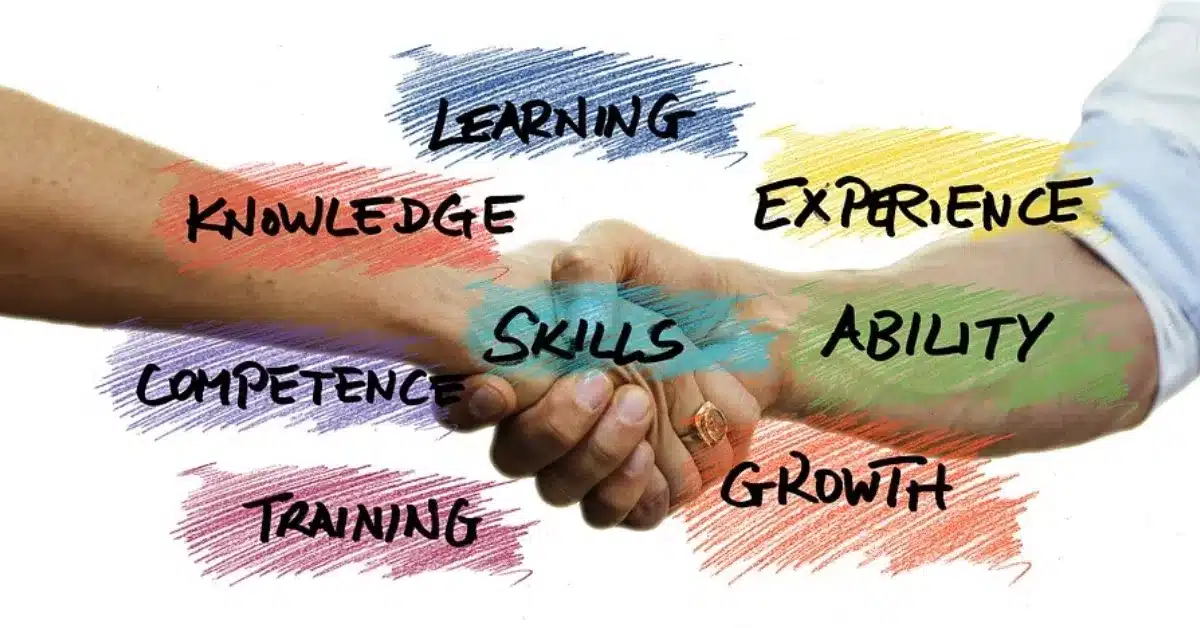Every time a startup company thinks of opting OKRs for their employees, they are taken aback by a number of questions. The most important of these questions is “How to drive performance with OKRs?”
OKRs have been used by a number of famous companies including Google, LinkedIn, Airbnb, etc. for a long time for improving the performance of employees and the company as a whole.
In this blog, you will find 11 simple steps through which you can use OKRs to drive the performance of your employees and company.
Performance & OKRs
The magic behind every outstanding performance is always found in the smallest of details- Gary Ryan

Technically, performance is the manner in which a certain task has been accomplished.
In terms of an organization, the performance of an employee is not just measured by his achievements.
It is actually related to his or her efforts, dedication, behaviour, and ability to carry out the work assigned to them.
OKRs are a proven methodology used for the enhancement of performance in an organization. These are used in creating alignment between the company and individual goals.
Moreover, they increase engagement through quantifiable key results. Regular communication and routine reviews ensure focusing on employee performance and work towards improving it.
Therefore, drive performance with OKRs and hence, enhance the success rate.
Significance of OKRs in performance enhancement

As per Forbes, OKRs are capable of inspiring exceptional performances. They help in setting motivating goals and ensure that every single employee works towards them.
Also, OKRs work towards empowering the employees and making them feel worthy. They provide them with the opportunity and independence to choose their own objectives.
These objectives are set in coordination with the broader goals set by the company. This way, employees can see their individual efforts making a difference in achieving the bigger company objectives.
OKRs can be extremely powerful in serving performance owing to their core values such as adaptability, flexibility, objectivity, quantifiability, diversity, versatility, traceability, and transparency.
How to drive performance with OKRs in 11 steps

OKRs ensure a company’s success by maintaining high-performing work culture. The basic idea is to keep employees productive, motivated and engaged.
Accurately utilizing OKRs can help in improving the performances of the employees and thus, enhance the overall growth of the company.
Mentioned below are the 10 simple steps that can be used to derive performance with OKRs.
1 Encouraging ambitious organizational goals
The purpose of OKRs is to set ambitious yet practical goals.
It focuses on setting goals that are capable of bringing the employees out of their comfort zone and making them work towards achieving the target that would otherwise appear difficult or sometimes impossible to them.
It motivates the employees to push themselves and give their best performance. The goals set using OKRs are challenging but at the same time not demotivating.
2 Objective and detailed outcome
Good OKRs don’t just mean setting the right objectives and key results, it is also about challenging and motivating the employees to achieve the goal.
This in turn helps employees to perform better and take that extra step needed to achieve their goals.
Moreover, discussing the desired outcomes with the employees and letting them set their own OKRs helps them to stay aligned with the organization’s goals.
This is useful in avoiding overlapping of work and inculcates accountability.
3 Employee growth
OKRs are also set individually for every employee they are capable of ascertaining the long-term success of the organization, along with the career growth of the employees.
OKRs do not only rely on the financial goals to estimate success but also on other factors such as performance, principles, communication, and teamwork.
This helps in boosting the confidence of hardworking employees.
4 Adaptable &flexible
OKRs are result-oriented and data-driven and hence, are quite flexible and adaptable in approach. This makes OKRs especially useful for startups where the business goals change frequently.
As new OKRs are set every quarter this helps startups to easily adapt and modify their business goals in this fast-changing business environment
As per Kris Duggan, CEO of Betterworks, 20-25% of the OKRs change during the course of progress. Further, OKRs can be used at any organizational setup and also, at any level of organization, be it a team or individual.
5 Aligning team & individual goals to big goals
Using OKRs ensures the involvement of employees at every step of the process and works toward establishing cordial relations between the employees and management.
Using OKRs enhances transparency and weekly reviews and feedback enhance communication. This further helps in improving alignment within the team as objectives are set after team discussion.
To keep the individual goals aligned with the overall company goals means to ensure that every team and individual is moving in the same direction. For this, OKRs uses three mechanisms:
Transparency
Visibility is important. The set goals should be clearly known and understood by every employee of the company. This keeps them motivated as they can see their individual performance making a difference to the larger goal.
OKRs help in maintaining transparency while progressing towards the goals by constantly updating the progress made by every employee. Also, they make it possible to calculate the risks involved with the key results.
Shared OKRs
This is considered to be an effective tool for creating alignment. The set OKRs are shared between two or more teams that have different initiatives.
This way the teams can keep track of one another and also help each other in overcoming obstacles. This also bridges the communication gaps and aids in building healthy and trustworthy relationships amongst peers.
360° alignment
The OKRs focus on creating 360° alignment. This means the overall alignment of every team and individual is towards the same goal. This alignment runs in every direction i.e. top, bottom, and also, sideways.
Giving equal consideration to everyone makes even the youngest of employees feel heard and taken care of. This in turn motivates the employees towards better performance.
6 Validate business plans
The viability of a business plan should be validated considering the expectations behind that plan. OKRs utilize set, time-bound metrics to measure the results and also, diligently track them.
Therefore, these are helpful in validating a business plan and also, in re-affirming its viability.
In the long run, OKRs help the startups to remain anchored to their original goals. Regular check-ins and reviews ensure better productivity and alignment.
7 Framing and tracking key results for individuals
The key results framed using OKRs should be measurable and objective in nature. These should behave as benchmarks to indicate progress and success.
For example, if an objective has been divided into 4 key results, as soon as the team has achieved two of them you know that the work is half done.
Therefore, regularly reviewing OKRs can help to track the progress in real-time. It will also help in highlighting the lagging areas, so they can be focused on and brought back to the race.
OKRs should be visible to every individual in order to make them traceable. This way employees have clarity of the goal and are capable of choosing the right direction.
It is equally important to ascertain that every employee is working on the right thing at the right time.
8 Focusing on what matters
In OKRs objectives are the goals aspired to be achieved by an organization and key results are the milestones that are time-bound and measurable.
Rightly pairing them together ensures focusing on the things that actually matter.
Therefore, OKRs are always set in certain numbers, and employees are involved during the process.
This allows the managers to take input from the employees and also to give them the autonomy to choose their own independent goals and key results.
Further, it also makes the employees understand the entire process as well as their role in it. They are made aware of the organization’s expectations and motivated to work towards achieving them.
Moreover, the scoring and self-assessment process at the end of the OKR cycle makes the employees understand their shortcomings and work on them during the next cycle.
9 Creating organizational commitment
The bond shared between the employee and employer is referred to as organizational commitment. This plays a vital role in understanding the psychological connection that an individual shares with his organization.
Organizational commitment is measured using three scales.
- The affection an individual has for his job.
- Fear of losing the job.
- The sense of obligation they feel to stay in the same job.
OKRs focus on building friendly relations between the employee and the employer, as well as between peers. This help in more sharing and thus, developing a stronger bond with each other.
Hence, OKRs help in creating and elevating the organizational commitment of employees.
10 Diverse & versatile
OKRs are designed to fit into the scenario of every organization, irrespective of their size, culture, or work. They work the same across different levels of a company. Hence, they are both diverse and versatile.
Also, OKRs inculcate focus, clarity, alignment, and accountability within the team working towards a single goal.
All these qualities of OKRs together inspire the employees as well as the management towards creating a progressive work culture.
11 Tracking & Re-aligning
Tracking the key results throughout the OKR cycle allows any discrepancies to come to the notice of management at its nascent stage.
Regular and frequent reviews ensure that such issues are identified and nipped in the bud.
Later, new objectives can be framed by re-aligning with the key result.
Also, the objectives and key results should be thoroughly assessed at the end of every OKR cycle.
This allows the management to understand whether the goals set for the previous cycle were inspirational, ordinary, or demotivating.
These observations allow the management to analyze the objectives to be set for the next cycle in reference to the previous one and thereby, helping in establishing the ideal goals for all future projects.
Conclusion
Every measure selected should be a part of a link of cause-and-effect relationships, and ultimately affect the growth and long-term perspectives of the organization. – Pearl Zhu
OKRs framework pushes the entire organization towards achieving the set goals. It is said that when implemented properly OKRs are capable of achieving 10X more growth than usual.
Other than this, OKRs are also capable of establishing high-performance work culture by focusing on the things that matter, creating organizational commitment through effective communication, aligning bigger goals with individual goals, and also, tracking and re-aligning the goals.
The basic thought behind OKRs is to set inspirational goals and the quantifiable key results. Therefore, an organization can derive performance with OKRs through effective implementation.







